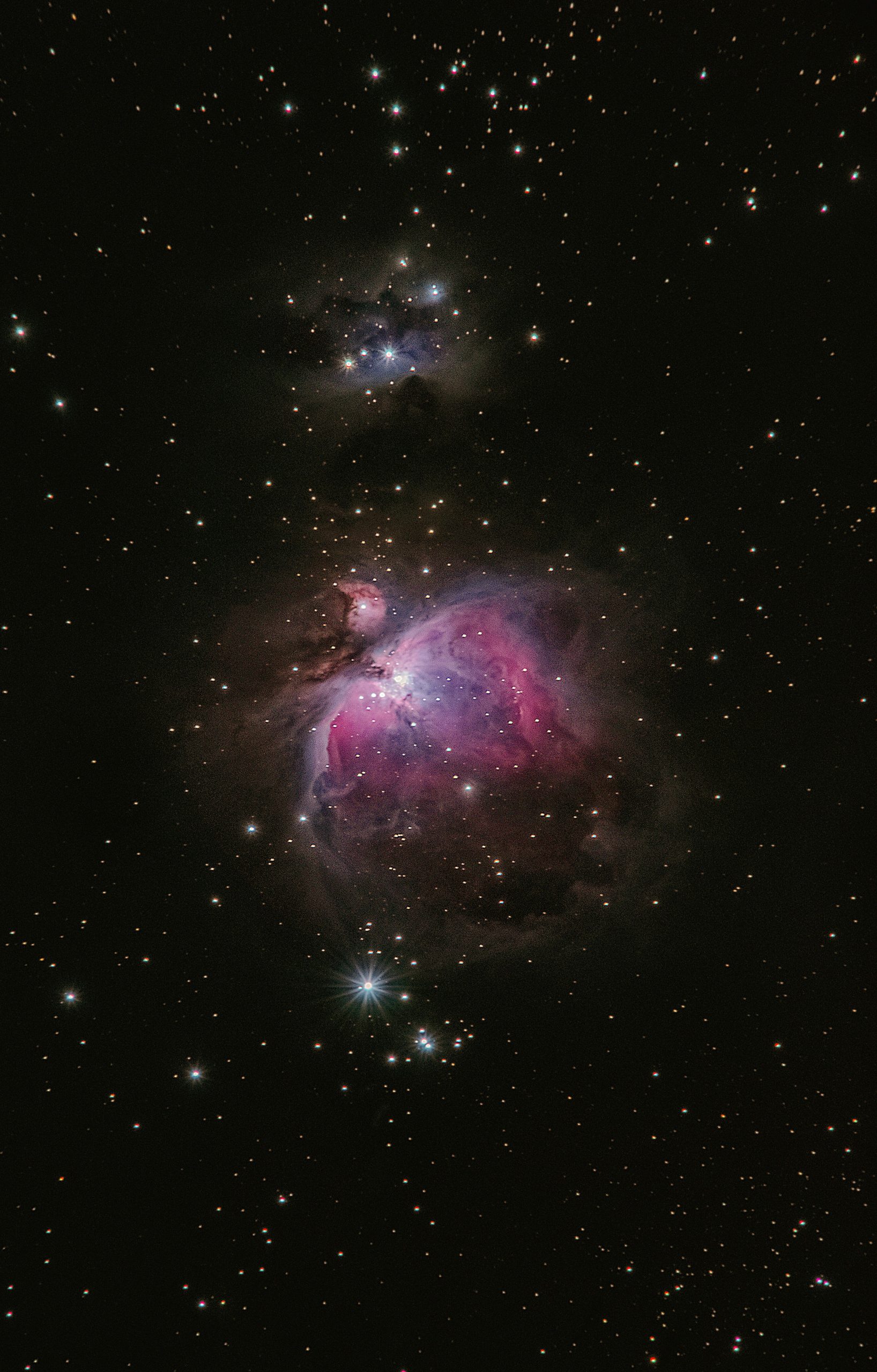Table of Contents [hide]
23 total views , 1 views today
I. Introduction
Space is home to an array of celestial bodies and structures, some of which are truly colossal. Understanding these large space objects provides insights into the universe’s formation, evolution, and the fundamental forces at play. This article delves into the largest space objects, ranging from massive stars to sprawling galaxies, and explores the methods used to observe and measure them.
II. Types of Large Space Objects
A. Stars
Stars are fundamental to our understanding of the cosmos. Among them, supergiants and hypergiants are the largest and most luminous.
- Supergiant Stars
Supergiants, like Betelgeuse and VY Canis Majoris, are among the largest stars known. Betelgeuse, located in the constellation Orion, has a radius approximately 1,000 times that of the Sun. VY Canis Majoris is even larger, with a radius over 1,200 times that of our Sun. These stars exhibit extreme luminosity and are in the final stages of their life cycle, often ending in supernovae.
- Hypergiant Stars
Hypergiants, such as UY Scuti and V354 Cephei, are even more massive than supergiants. These rare stars can have radii up to 1,500 times that of the Sun. They are characterized by their instability and significant mass loss, which impacts their evolutionary path.
B. Planets
Planets, too, can be quite enormous. The gas giants and ice giants in our solar system are prime examples.
- Gas Giants
Jupiter and Saturn are the two largest planets in our solar system. Jupiter, with a diameter of about 142,984 kilometers, is the largest planet, known for its Great Red Spot and extensive moon system. Saturn, though slightly smaller, is renowned for its prominent ring system and has a diameter of approximately 120,536 kilometers.
- Ice Giants
Uranus and Neptune, classified as ice giants, are also significant in size but differ in composition from gas giants. Uranus has a diameter of about 50,724 kilometers, while Neptune is slightly smaller at around 49,244 kilometers. Both planets possess unique magnetic fields and atmospheric characteristics.
C. Moons
Some moons are substantial enough to rival planets in size.
- Ganymede
Ganymede, a moon of Jupiter, is the largest moon in the solar system. With a diameter of about 5,268 kilometers, it surpasses Mercury in size. It has its own magnetic field and a surface marked by a mix of ice and rock.
- Titan
Titan, Saturn’s largest moon, has a diameter of approximately 5,151 kilometers. It features a thick atmosphere and liquid lakes of methane and ethane on its surface, making it a unique object of study.
D. Dwarf Planets
Dwarf planets, though smaller than full-fledged planets, can be quite large relative to other objects in the solar system.
- Pluto
Once classified as the ninth planet, Pluto now holds the status of a dwarf planet. It has a diameter of about 2,377 kilometers and a highly elliptical orbit. Its surface is a complex mix of ice and rock, with a thin atmosphere.
- Eris
Eris, another prominent dwarf planet, is slightly smaller than Pluto but more massive. It has a diameter of approximately 2,326 kilometers and a highly inclined orbit that takes it far from the Sun.
E. Galaxies
Galaxies are massive systems of stars, gas, dust, and dark matter.
- Spiral Galaxies
The Milky Way and Andromeda are prominent spiral galaxies. The Milky Way has a diameter of about 100,000 light-years, while Andromeda, the closest spiral galaxy to us, spans approximately 220,000 light-years. These galaxies are characterized by their spiral structure and central bulge.
- Elliptical Galaxies
Elliptical galaxies, such as M87 and IC 1101, vary widely in size. M87, located in the Virgo Cluster, is a giant elliptical galaxy with a diameter of about 120,000 light-years. IC 1101, one of the largest known galaxies, stretches across roughly 6 million light-years.
- Irregular Galaxies
Irregular galaxies like the Large Magellanic Cloud lack a defined shape. The Large Magellanic Cloud, a satellite galaxy of the Milky Way, has a diameter of about 14,000 light-years and is rich in star-forming regions.
F. Galaxy Clusters
Galaxy clusters are massive structures containing numerous galaxies.
- Local Group
The Local Group is a collection of over 50 galaxies, including the Milky Way, Andromeda, and the Triangulum Galaxy. It spans about 10 million light-years and provides a glimpse into smaller-scale cosmic structure.
- Virgo Cluster
The Virgo Cluster, a large galaxy cluster, contains thousands of galaxies and spans about 1.2 million light-years. It is the center of the Local Supercluster and plays a key role in understanding the large-scale structure of the universe.
- Coma Cluster
The Coma Cluster is another massive galaxy cluster, with over 1,000 galaxies. It measures about 2 million light-years in diameter and is an important site for studying dark matter and galaxy evolution.
G. Cosmic Structures
- Superclusters
Superclusters, such as the Laniakea Supercluster, represent some of the largest known structures in the universe. The Laniakea Supercluster, which includes the Milky Way, spans approximately 520 million light-years and contains thousands of galaxies.
- Cosmic Voids
Cosmic voids, like the Boötes Void, are vast, underdense regions in the universe. The Boötes Void, one of the largest known voids, spans about 330 million light-years and provides insight into the distribution of matter in the universe.
III. Observing and Measuring Large Space Objects
A. Methods of Observation
- Telescopes
Ground-based and space-based telescopes, such as the Hubble Space Telescope and the James Webb Space Telescope, play crucial roles in observing distant and massive space objects. These instruments capture light and other forms of electromagnetic radiation, allowing scientists to study celestial bodies in detail.
- Radio Astronomy
Radio telescopes, like the Arecibo Observatory, enable the study of cosmic phenomena that emit radio waves. This technique is particularly useful for observing objects like pulsars and distant galaxies.
- Gravitational Lensing
Gravitational lensing occurs when a massive object bends the light from objects behind it, allowing astronomers to study distant galaxies and dark matter. This method provides insights into the distribution of mass in the universe.
B. Measuring Sizes and Distances
- Parallax
Parallax is a method used to measure the distance to nearby stars by observing their apparent shift in position against more distant background objects. This technique is fundamental for determining stellar distances.
- Redshift and Hubble’s Law
Redshift, the stretching of light due to the universe’s expansion, helps measure the distance of far-off galaxies. Hubble’s Law relates this redshift to the distance of galaxies, providing a way to estimate the scale of the universe.
- Standard Candles
Standard candles, such as Cepheid variables and Type Ia supernovae, have known luminosities, which allows astronomers to calculate their distances based on observed brightness. This method is crucial for measuring distances in the universe.
IV. Theoretical and Observational Limits
A. Size Limits in Observations
Observational challenges include the vast distances and faint light from distant objects. Technological constraints also limit our ability to observe the smallest details or the most distant objects.
B. Future Prospects
Advancements in telescope technology and observational techniques promise to enhance our understanding of large space objects. Upcoming missions and theoretical models aim to explore previously inaccessible regions and answer fundamental questions about the universe.
V. Conclusion
The exploration of the largest space objects reveals the vastness and complexity of the universe. From colossal stars and massive galaxies to expansive cosmic structures, each object provides valuable insights into the workings of the cosmos. Continued research and technological advancements will undoubtedly uncover more about these grand celestial phenomena.
Share This





Be the first to comment